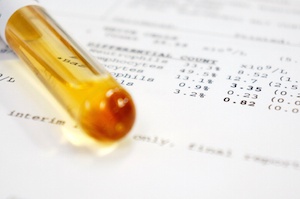
Anti-mullerian hormone (AMH) levels are now routinely used clinically to assess ovarian reserve. AMH levels are believed to reflect the pool of oocytes (eggs) that remain in the ovary (ies). Low AMH level are associated with a reduced number of eggs that are available and will often predict low ovarian response during IVF. AMH levels are therefore believed to reflect the quantity of eggs that remain. The question is, do AMH levels also reflect egg quality and therefore pregnancy rates with IVF?
This very issue was addressed by a group of Swedish researchers (Brodin et al., Antimullerian hormone levels are strongly associated with live-birth rates after assisted reproduction. J Clin Endocrinol Metab 98:1107-14, 2013). Brodin et al. studied AMH levels in 892 consecutive women undergoing 1230 IVF cycles. They log-transformed AMH values (a mathematical conversion to make sense of the data) and stratified them into four groups (25th, 50th and 75th percentiles of the observations). Here are the results of the study.
The AMH levels ranged from 0.06 to 26.3 ng/ml. The median level was 1.6 ng/ml and the mean (SD) level was 2.3 (2.5) ng/ml. The pregnancy rate was positively correlated with AMH levels up to 5 ng/ml and then leveled. This correlation was true even after adjusting for age. The 25th and 75th percentiles were AMH 0.84 and 2.94 ng/ml, respectively.
There was no AMH level below which no pregnancies occurred. In patients with very low AMH levels (< 0.2 ng/ml), only 18 of 53 (34%, all ages) started cycles resulted in embryo transfer and only three cycles ended in a pregnancy and live birth.
AMH was independently significant in predicting pregnancy rate and live birth rate. The chances of live birth increased 42% for each AMH stratum upward.
The authors therefore believe that AMH levels reflect both egg quantity and quality.
Infertility Infertility treatment IVF Diminished ovarian reserve

Dr. Karande is Board Certified in the specialty of Obstetrics and Gynecology as well as the subspecialty of Reproductive Endocrinology and Infertility. He is a Fellow of the American College of Obstetricians and Gynecologists and Member of the American Society for Reproductive Medicine.
Subscribe to our weekly blog digest

Entire Website © 2003 - 2020
Karande and Associates d/b/a InVia
Fertility Specialists

Comments